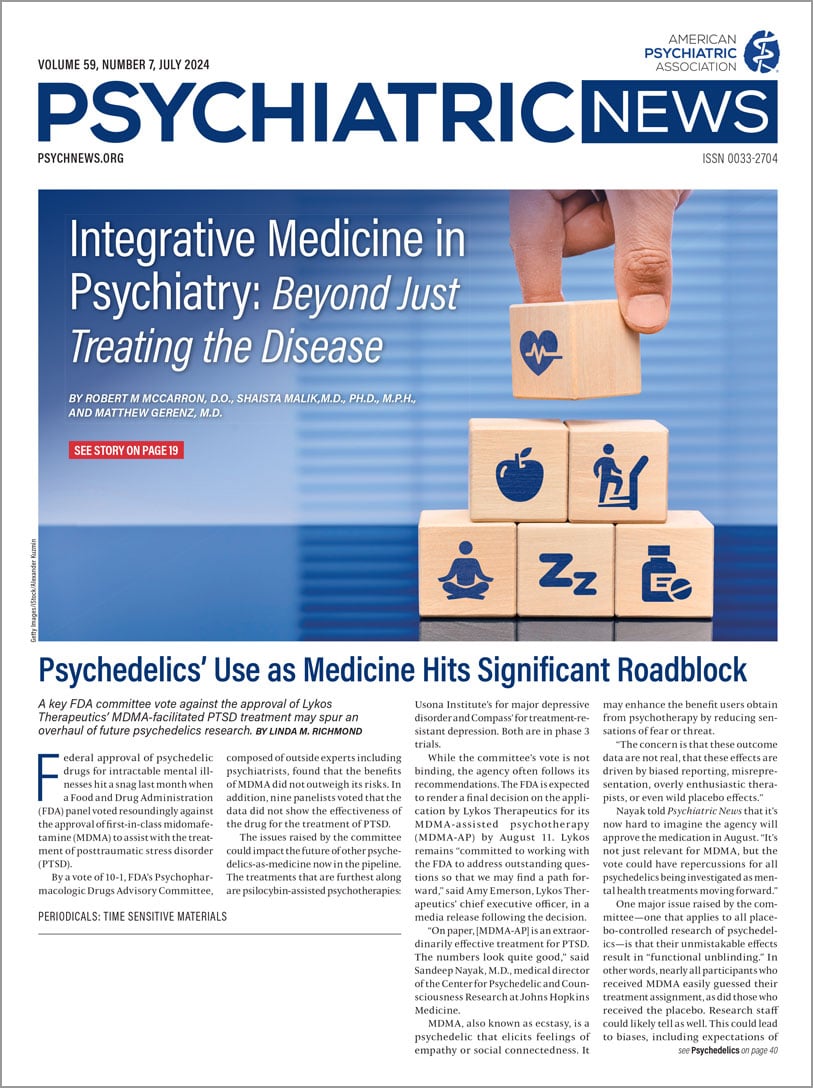Translational medicine seeks evidence from basic and clinical research to provide personalized treatments for our patients. Researchers investigating areas such as genetics, genomics, and environmental variables work to provide the missing data we need to individualize care to a progressively granular degree and overcome treatment failure. These efforts may seem remote to us clinicians who spend our days face to face with patients, rather than in the laboratory, and we may see ourselves as only passive recipients of the process. Effective translational medicine, though, in its attempt to identify the most likely effective treatment, requires ongoing dynamic, multidimensional clinical assessments of each patient that modify treatments as needed to effectively utilize new knowledge.
Like a relay race, which requires team members with particular skills to run each unique leg, professionals at each stage of investigation and intervention, especially clinical practitioners, must effectively fulfill our role to achieve patient success. We clinicians may feel we contribute little new knowledge to our field, even though we can provide insight and feedback that help researchers improve study design. It is also clinical practitioners who have the opportunity (and responsibility) to expertly apply new knowledge in each doctor-patient relationship, allowing the basic and clinical research findings to have their fullest impact. It is the clinicians who anchor the final leg of the race and cross the finish line with our patients. Researchers studying implementation of evidence-based practices have learned that clinical guidance from new medical research is adopted and shared by individual practitioners, rather than through administrative or systemic leadership. We are prone to follow the practices of respected authorities, but our own attitudes and beliefs filter research data. We determine actionable evidence by its fit with our previous knowledge and its clinical practicality.
This very same autonomy in evaluating and choosing treatments to recommend appears to drive successful translation. Isolated practice with limited feedback, though, is a frequent setting for cognitive error in psychiatric practice; we must fully share and discuss our new findings with colleagues to truly advance clinical care. We can ensure we are taking this responsibility seriously enough by remaining mindful of our thought processes and methods of clinical reasoning, ever vigilant for feedback on our own conclusions and decisions.
As we transition from the peak influence of psychopharmacology to the emerging paradigm of neural circuitry and wait for clearer answers and guidance from the earlier legs of translational psychiatry, we can fully utilize the data we already have, employing the data through the best clinical reasoning. Our diagnoses and treatment plans are based on concepts tied to our current data. As patient and research data evolve, even during a single treatment, we must update our models to find clinical answers that work for more patients. We must think of our diagnoses and treatments as hypotheses and test them by comparing expected to actual results. Then, having incorporated new outcome data, we choose the best new hypothesis to move forward, knowing that we will repeat this process at the end of the next trial, as well. As George E.P. Box and N.R. Draper reminded us in their book, Empirical Model-Building and Response Surfaces, “[A]ll models are wrong; the practical question is how wrong do they have to be to not be useful.”
Clinicians contribute directly to translational medicine and psychiatry by continuing to revise our assessments and treatments in response to new, replicated information as soon as it arrives. If our conclusions are incomplete or incorrect, there is no translation and therefore fewer evidence-based successful treatment outcomes.
Even wonderful data are not helpful to patients if we clinicians do not correctly and effectively incorporate the information into our treatment planning discussions. Anchoring the final leg—making sure that new basic and clinical research data are optimally applied—is the job of every clinician, for the benefit of every patient. ■

